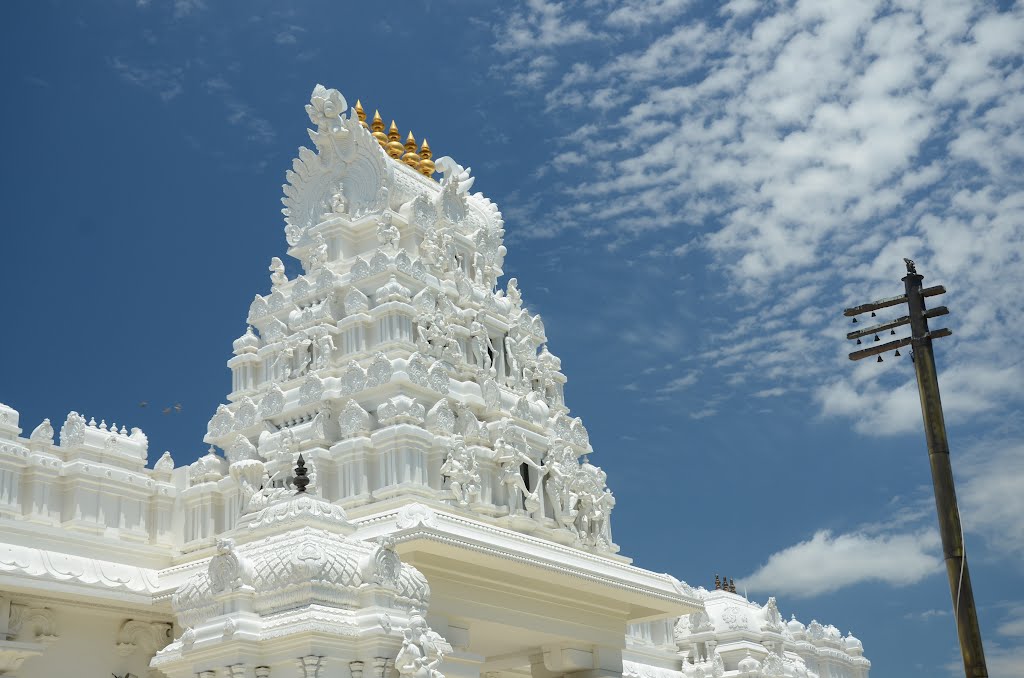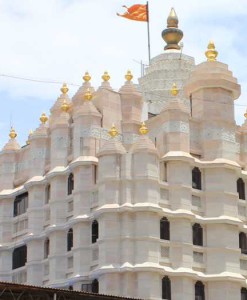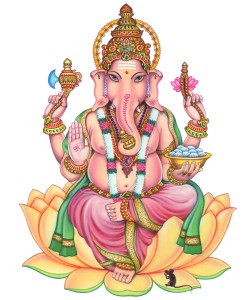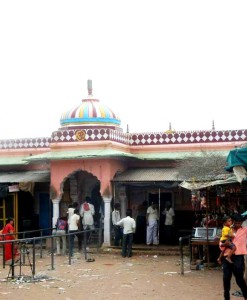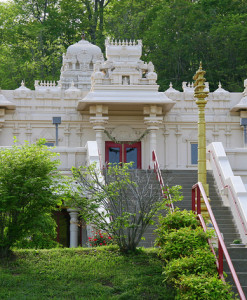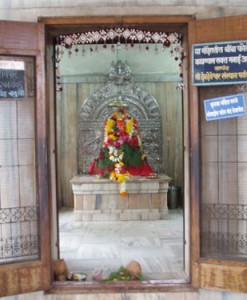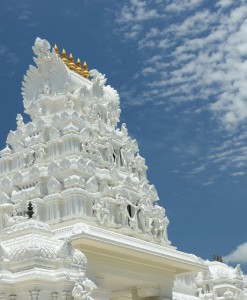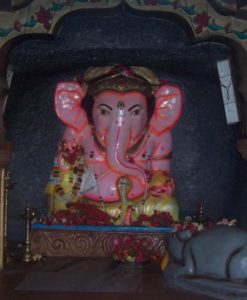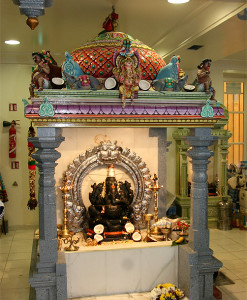No products in the cart.
Hindu Temple of Central Texas was developed by group of Indians who have settled there. They have constructed the temple by forming an organization and collected funds from various people. This is the place where all people attain peace.
Hindu Temple of Central Texas
It was in 1999 that Madhava R. Beeram, the founding President of the temple, noticed that, as a physician when he was invited to attend the religious services associated with his patients, even a small community would have a church or other place of worship. To have a public place of worship and good religious/social support system is common even among the poorest of local American communities, he observed. In spite of the good socioeconomic standing of us (the Hindu community), we did not have an infrastructure or support system to share our joy or sorrow during day to day life. And the seed was sown for the Hindu Temple of Central Texas. The monumental persuasive powers of Beeram convinced several pillars of the Hindu community in Central Texas to come up with strong moral and financial support for the construction of the temple. After countless hours of deliberations, hard work and unbelievable amounts of financial sacrifice from this small community, the Hindu Temple (Omkara Maha Ganapathi Devasthanam) rose on a beautiful twelve-acre land just off Interstate 35 at 4309 Midway Drive in Temple, Texas. Temples, of course, are not built in a day. After almost 6 years and two million Dollars, the Hindu community of Central Texas has a beautiful temple of various deities, a dining hall (Annapurna Hall) and center for learning and the performance of cultural activities (Saraswathi Nilayam).
Until the temple was built, families have been meeting in individual houses and celebrating Hindu festivals since1980 and traveling to distant places like San Antonio, Dallas and Houston to fulfill their spiritual needs. The small Indian community has been sharing its religious and cultural treasures with the Temple and other central Texas communities by inviting them to become part of its activities. From a religious standpoint, classes for children have been going on since 1981 under the tutelage of Mrs. Shyamala Nair. She along with a number of others perceived the need to inculcate the values and to educate the second generation of our religion, culture and heritage. Weekly classes for children have been ongoing, initially in her home for almost twenty years, and now being continued at the temple. The rich cultural heritage was introduced to the younger generation in the dance format by Mrs. Vinitha Subramanian. She relentlessly shared her talent and love for dancing with her students. Classes were held in her home for many years and then relocated to the temple on completion.
The city of Temple was now awakening to the Hindu Temple. The seed was planted; it germinated and was ready to grow. Mani Subramanian was inspired to purchase a 10 acre tract of land and generously donated it to become the home of the temple. This prime location is within the Temple city limit and is just 0.7 miles east of I-35 (exit 297 from the freeway). This is also the I-35 Corridor Temple, only half a mile from a major freeway. The HTCT is the first ever traditional Hindu Temple in Central Texas area and it opened its doors to the devotees on the 9th of December, 2001.
After some commitment for substantial backing from some of our members, Hindu Temple of Central Texas was incorporated as a non-profit organization with the help of Mr. Ramadass, an accountant from San Antonio. Many of our members like Mani Subramanian, P.K. Nair, Sundaram Sukumar, Gopal Guttikonda, Rajni Shah, Girija Chintapalli, Madhava R. Beeram, Y.V. Rao and Phalguni Mukhopadhyay made substantial initial contributions for the project and formed the core committee for this organization. Sudhir Madisetty, Gankeyan Kanthasamy, Shrikant Rishi, Bhaskar Vouruganti and Charndrakant Patel joined the committee after 2003.
Dr. Ramakrishna Rao and Dr. Kamala Rao sponsored ?BalaVinayaka?. Girija & Laxmi Chintapalli sponsored the Maha Ganapathi Idol. Tirupathi Devasthanam donated Venkateswara & Padmavathi deities. Sundaram & Latha Sukumar sponsored the deity of Subramanya. Parvathi was sponsored by Mani and Vinitha Subramanian. Radha and Krishna were sponsored by Sudharsan & Kalpana Majmudar and Ram Parivar by Bobby & Shobhana Bhakta. Shiva lingam was sponsored by Ramesh and Usha Patel and Swami Ayyappan by Prasanna and Shyamala Nair. Amba Matha was sponsored by Vipul and Dipti Patel and Anjaneya by Y.V and Anjali Rao. The community is richly blessed with many talents and the magnificent temple emblem was designed by CV Jithendran.
With the help of all these people, building construction was started in May of 2001 under the supervision of Y.V. Rao and he worked tirelessly with several contractors both in the United States and India coordinating with the Board to build the beautiful temple. Since the opening of the temple in December 2001, many devotes have opened their hearts as well as their wallets and without their help we could not have accomplished so much in so little time. The beautiful temple construction project culminated in the completion of Raja Gopuram, giving an authentic look of an Indian Hindu temple. This work of art was ably done by a group of skilled and talented shilpis under the leadership of Ganesh Rajagopalan.
Ganesha is the main deity in this holy place, with a magnanimous OM shining behind Him, projecting the unifying theme of Hinduism (hence the name OMKARA MAHAGANAPATHY). Lord Ganesha, 3300 pounds in weight, was chiseled from a large single stone cut from a mountain by religious artisans in Mahabalipuram under strict Hindu traditions. Other black granite stone deities include: Sri Venkateswara & Padmavathi from Tirupati, Lord Shiva & Parvathi, Subramanya, Navagraha, from Mahabalipuram, Swami Ayyappa brass idol from Tamilnadu and beautiful Ram Parivar, Amba Matha & Radha Krishna marble deities from Rajasthan.
The temple’s interior structure is meticulously constructed in series of Garbha Grihas (Garbha gudies) reflecting diverse Hindu architecture for each deity. Details of these Sannidhis are exquisite. Ram Parivar, Amba Matha and Radha-Krishna mandirs depict beautiful north Indian architecture, Ayyappa?s sannidhi reflects Sabarimalai features while other areas project traditional South Indian architecture in great detail. This monumental task has been accomplished by bringing in a group of highly skilled shilpis from India under the leadership of the late Mr. Devarajan and Geeth exports of Chennai.
The Hindu Temple of Central Texas was started with a clear and simple purpose: 1) To provide a serene beautiful traditional Hindu place of worship to all devotees regardless of their denomination or geographical origin; 2) to create fellowship and camaraderie in the Hindu community, so that it will be a source of religious, spiritual and social support for people in need; 3) to be an educational source for our younger generation and American community (schools, colleges and public) and 4) to support the community at large (we live in), particularly the people in need.
Temple is involved in several community projects one of which is donating food to Martha’s kitchen. Yoga classes are offered every Thursday. Several cultural programs of famous artists from India and the USA are performed at the Saraswathi Nilayam. Bhagavad Gita classes are conducted for the children and adults weekly.
Monday-Friday:
9 AM to 12 PM, 5 – 8.30 PM
Saturay Sunday Holidays:
9 AM to 8.30 PM
Some of the major festivals celebrated annually include Ram Navmi, Janmashtami, Shivratri, Holi, Ganesh Chaturthi and Diwali. Marking the Hindu New Year, Diwali is one of the grandest Hindu festivals, and attracts many visitors and devotees to the mandir.
Other places which are worth visiting in Kolkata are Dakshineswar Kali Temple, Kalighat Kali Temple ,Belur Math, Tipu Sultan Mosque, Nakhoda Mosque, St. Paul’s Cathedral, St. John’s Church, Greek Orthodox Church, St. James’ Anglican Church (Jora Girja), Guruduwara, Synagogues, Armenian Church, Parsi Fire TemplesJapanese, Buddhist Temple, And Badridas Jain Temple

